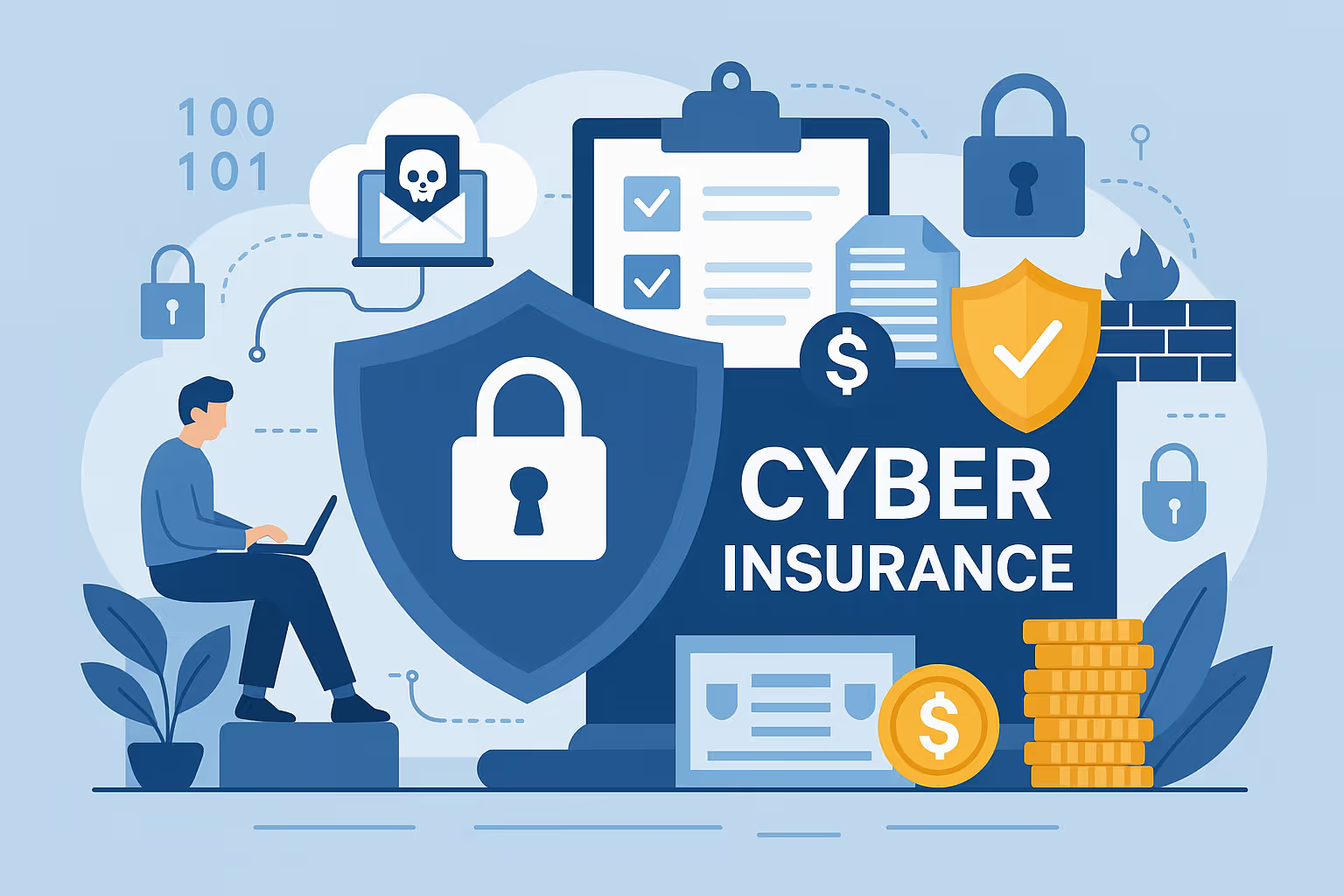
How to get...
For organizations in the Insurance sector in the United States, the process of obtaining cyber insurance can be broken down into clear, actionable steps. Below is an in-depth guide on how to get cyber insurance for Insurance while ensuring you meet all compliance and documentation requirements.
Begin by evaluating your company’s cybersecurity posture. This means identifying potential vulnerabilities, understanding data flows, and surveying your IT infrastructure. A detailed risk assessment will be essential documentation for your insurer to quantify potential exposure.
Prepare a portfolio of documentation that includes cybersecurity policies, incident response plans, past security incident records, network architecture diagrams, and any compliance certifications. These materials provide evidence of your mitigation measures and will support favorable underwriting.
Work with an experienced cyber insurance broker who specializes in the insurance industry. They can help you navigate provider options, clearly explain policy terms, and assist in framing your documentation in a way that highlights your commitment to security, all of which are crucial when determining premium costs.
Compare multiple providers to address specific risks in the insurance sector. Look for policies that cover data breaches, regulatory fines, business interruption, and extortion. Ensure you review coverage limits, deductibles, and any exclusions that may impact your business.
Submit your detailed documentation and risk assessment to the chosen provider. The underwriting process evaluates your cybersecurity measures and determines your risk level. Be prepared to answer follow-up questions and provide additional documentation if required.
Once a policy is offered, carefully review the terms and conditions. Ensure that requirements around periodic risk assessments or updates to your cybersecurity measures are manageable. Establish a plan for maintaining compliance and reporting changes, as insurers may require regular updates.
Upon agreement with the insurer, finalize the policy. Remember that maintaining robust cybersecurity practices is not only vital for minimizing risks but might also be a condition for policy retention. Continuous monitoring and regular updates on your cybersecurity posture can help in future renewals and claims processes.
Following these steps ensures that your organization meets the rigorous standards expected by insurers in the U.S. Insurance sector. Documenting your cybersecurity efforts diligently and working with industry experts are critical components of securing optimal cyber insurance coverage.

Who provides...
Cyber insurance providers for Insurance in the United States fall into several distinct categories, each offering unique strengths for organizations in the Insurance sector. These include:
Practical insights for evaluating these providers include:


Why need...
U.S. insurance companies uniquely collect highly sensitive personal and financial information, making them prime targets for sophisticated cyber threats. Data breaches, ransomware, and insider threats can result in immediate financial losses, regulatory penalties, and long-term reputational damage. These organizations also face complex challenges due to evolving compliance requirements under U.S. laws, increasing the impact of any cyber incident.
For instance, if confidential customer data is compromised, companies not only deal with the cost of remediation and legal fees but also risk losing clients and trust, which can lead to significantly reduced revenue streams. Cyber insurance for Insurance in the United States plays a critical role in mitigating these risks by helping to cover costs associated with incident response, regulatory fines, and customer notification processes.
Having cyber insurance for Insurance ensures that financial and technical support is available when needed most, allowing companies to rapidly respond to cyber incidents, minimize downtime, and maintain business continuity while protecting their reputation and customer relationships.
Build Security with OCD Tech That Meets the Standard — and Moves You Forward
Contact Us
Cyber insurance rules guide U.S. insurers. Underwriting checks cyber defenses and practices. They help manage breach risks.
This requirement mandates that companies provide thorough documentation of their cybersecurity policies, including risk management strategies and incident response plans. Insurers look for clear, written policies because it indicates a structured approach to mitigating cyber risks.
Companies must show evidence of effective technical security controls such as firewalls, intrusion detection systems, multi-factor authentication, and encryption protocols. Insurers require this proof because well-implemented controls lower risk exposure.
Insurers expect companies to comply with relevant cybersecurity standards and regulations, such as NIST or FFIEC guidelines, tailored to the Insurance sector. Compliance evidence is essential as it validates that an organization meets external security benchmarks.
Applicants must provide detailed records of past cybersecurity incidents, along with the measures taken during and after such events. Insurers require a transparent history to assess the organization’s vulnerability and resilience.
Regular risk assessments and documented evaluations of third-party vendors are required to ensure that external relationships do not introduce additional cyber risks. Insurers focus on continuous risk mitigation strategies as a key factor in evaluating overall cyber resilience.
Secure Your Business with Expert Cybersecurity & Compliance Today
Contact Us


Differences by State...
Organizations in the Insurance sector evaluate policies based on state-imposed cybersecurity standards, the depth of required risk assessments, and specific legal compliance issues. These differences mean that companies must:
By thoroughly understanding these state differences, Insurance companies can make informed decisions when purchasing cyber insurance, ensuring robust protection that meets both state-specific mandates and industry-specific challenges.

Compliance & Frameworks...
In the U.S. Insurance sector, achieving cyber insurance for Insurance involves adhering to several fundamental compliance frameworks and regulations that not only strengthen cybersecurity posture but also directly impact eligibility, underwriting requirements, and premium costs. The most critical areas include:
Together, these frameworks and mandates help establish a solid cybersecurity culture within insurance organizations. Demonstrating compliance not only minimizes risk exposure but also results in more attractive underwriting terms and competitive premium costs, making it essential for any insurance provider aiming for robust cyber insurance coverage.

Audit. Security. Assurance.
IT Audit | Cybersecurity | IT Assurance | IT Security Consultants – OCD Tech is a technology consulting firm serving the IT security and consulting needs of businesses in Boston (MA), Braintree (MA) and across New England. We primarily serve Fortune 500 companies including auto dealers, financial institutions, higher education, government contractors, and not-for-profit organizations with SOC 2 reporting, CMMC readiness, IT Security Audits, Penetration Testing and Vulnerability Assessments. We also provide dark web monitoring, DFARS compliance, and IT general controls review.
Contact Info
.svg)
OCD Tech
.svg)
25 BHOP, Suite 407, Braintree MA, 02184
.svg)
844-623-8324
.svg)
https://ocd-tech.com
Follow Us
Videos
Check Out the Latest Videos From OCD Tech!
Services
SOC Reporting Services
– SOC 2 ® Readiness Assessment
– SOC 2 ®
– SOC 3 ®
– SOC for Cybersecurity ®
IT Advisory Services
– IT Vulnerability Assessment
– Penetration Testing
– Privileged Access Management
– Social Engineering
– WISP
– General IT Controls Review
IT Government Compliance Services
– CMMC
– DFARS Compliance
– FTC Safeguards vCISO